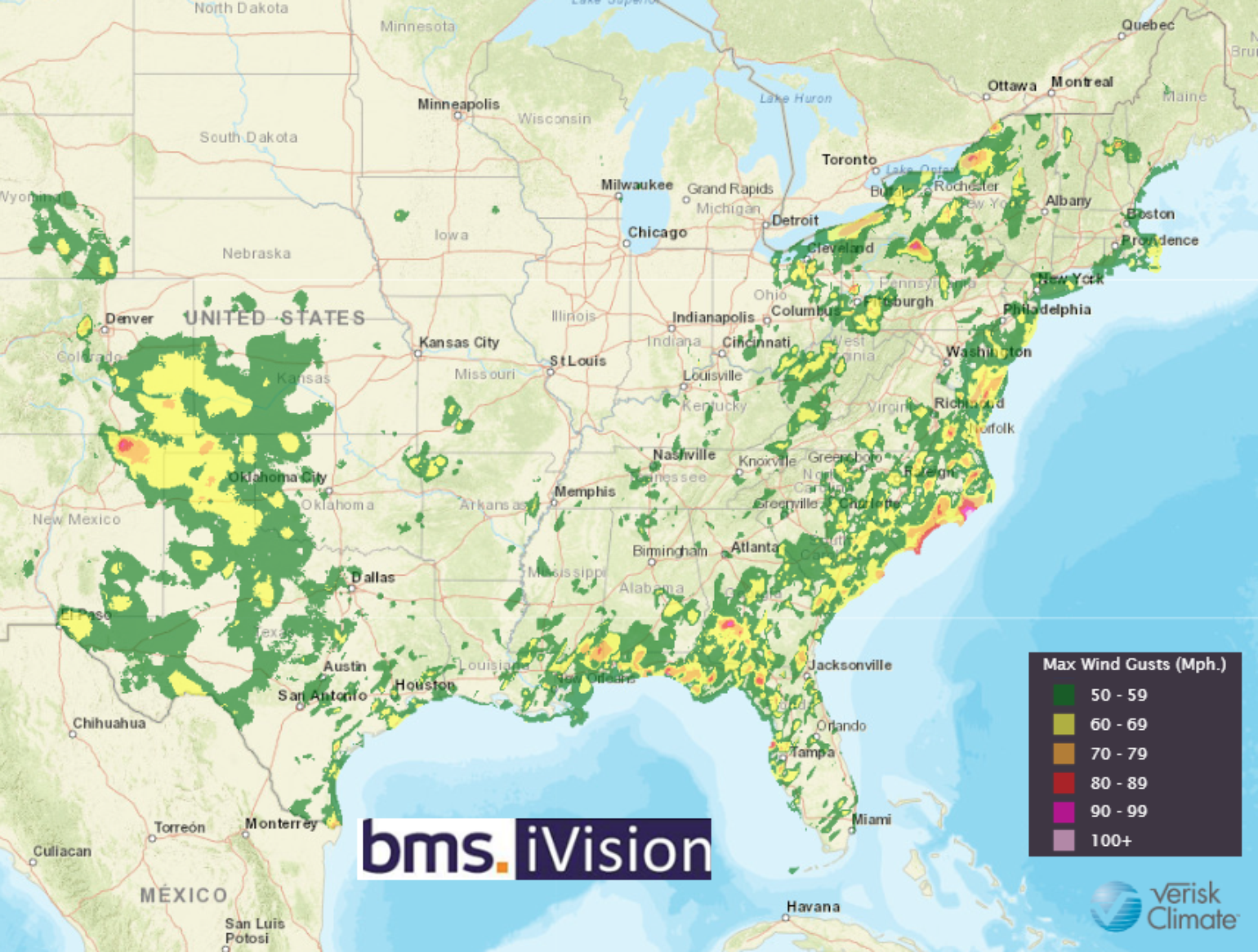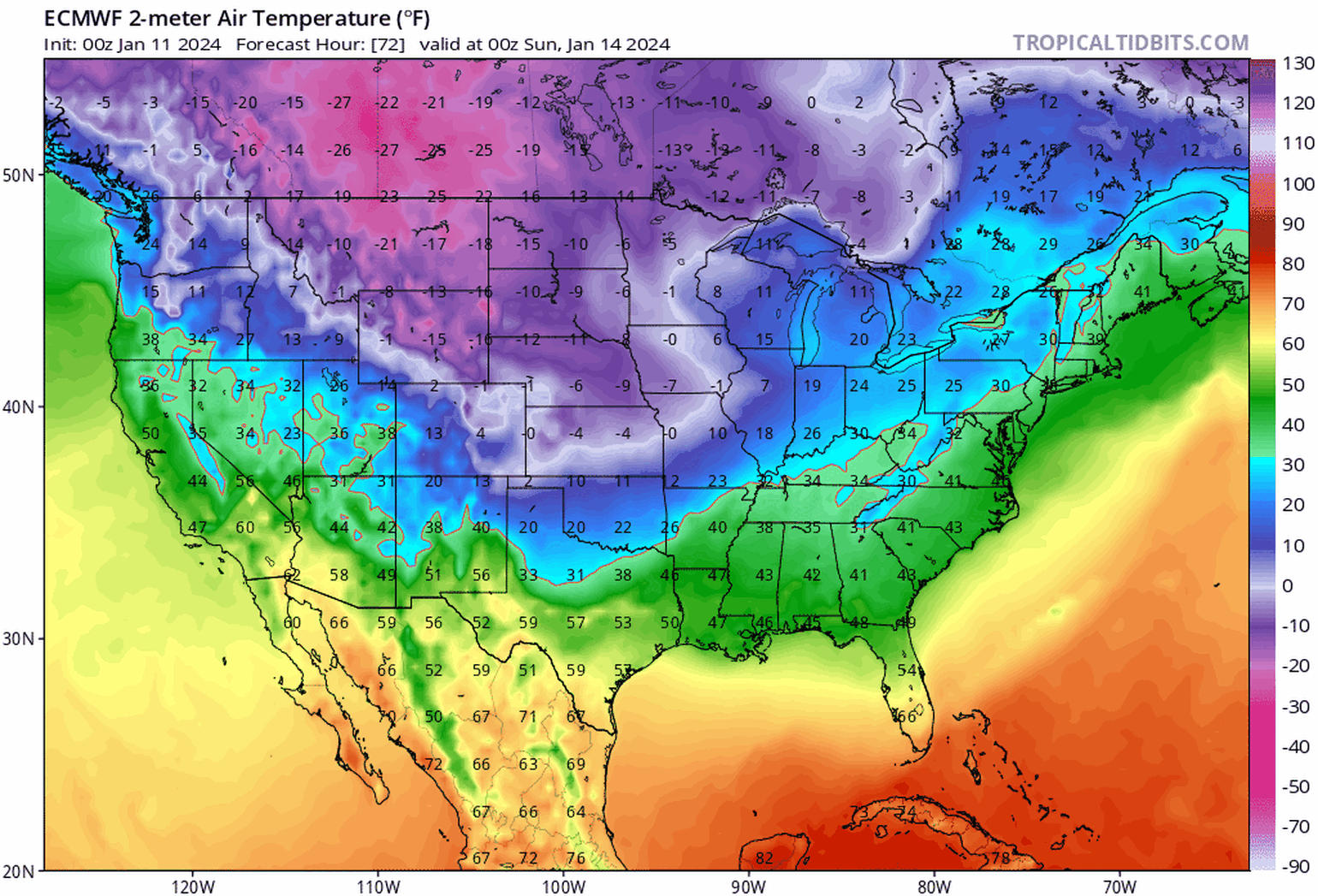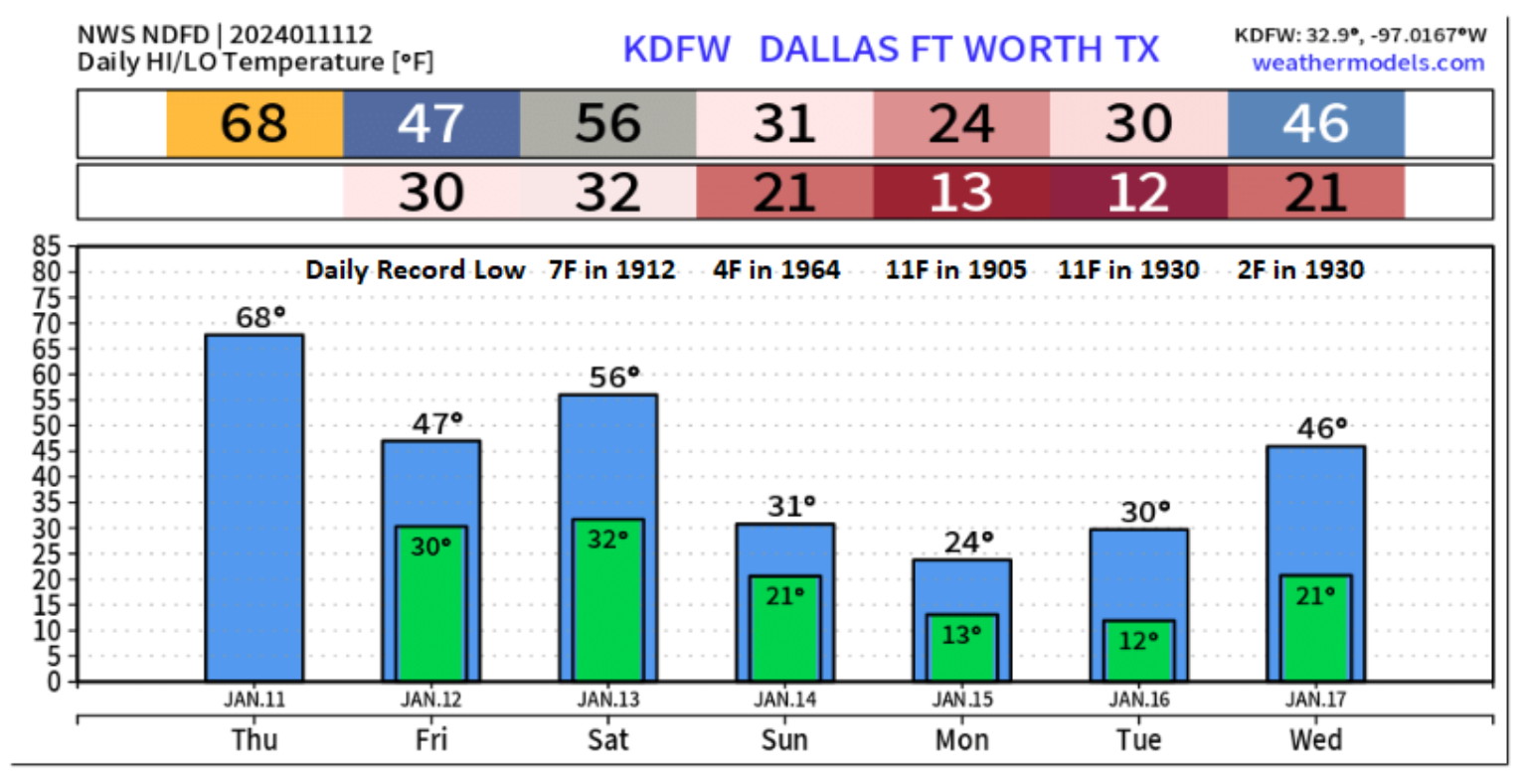Arctic Blast 2024
Unfortunately, the insurance industry is no stranger to winter storm losses. In fact, losses have totalled over $40B over the last ten years for the insurance industry. All too recently, about 37% of that loss came from the severe winter weather that occurred over the month of February 2021, which saw losses accumulate from freezing temperatures, ice accumulation, power outages, snow, wind, and, in some localized areas, flooding. There is still general debate if this was indeed a natural disaster or an artificial event due to the severe limitation that the cold put on power provider Electric Reliability Council of Texas (ERCOT) that resulted in over 11 million customers without power at some point in time over the multi-day cold snap. The lack of power contributed to a large portion of the property damage as a result of frozen pipes that would bust and cause water damage. Texas officials estimated that because of the power grid failure, 246 deaths occurred, and two-thirds of the deaths resulted from hypothermia. This severe winter storm put winter storms back on the radar of insurance companies. It highlighted the ever-increasing non-peak perils (Secondary Perils) that have been driving up significant losses in recent years.

Over the next several days, an intense cold pool that has been situated over the Arctic as part of the Polar Vortex will be displaced. Until now, the polar vortex has not been very supportive of cold over the Northern Hemisphere, which is likely a good reason much of the lower 48 states have had a lack of snow and experienced the warmest December on record. Changes in the Northern Hemisphere started about two weeks ago with a weather phenomenon often called stratospheric warming, which can lead to the displacement of this polar vortex into lower latitudes. Over the last few days, the cold has intensified over NW Canada and is forecasted to slowly but surely drain southward into the Continental U.S.
Since it has been so warm in December, a battle is now underway with what has been a zonal flow from the Pacific, with moisture and warmth clashing with high pressure associated with the arctic blast. This recent buckling of the jet stream has led to our first U.S. insurance industry loss event of 2024, resulting in a severe weather outbreak across the southeast U.S. into the Mid-Atlantic states, with about 550 reports of severe weather this week. It is too early to put a loss number on the recent severe weather. However, severe weather events like this that span multiple states across the Gulf Coast up into the Mid-Atlantic tend to have an average insurance industry loss north of $500M.

The second major insured loss event of 2024 will likely occur with the next mid-latitude cyclone, which is expected to intensify over the central U.S. starting today. This mid-latitude cyclone could break some low-pressure records across Illinois as a major snowstorm moves to the northeast and into Michigan. Similar to the events of this past Monday and Tuesday, this new weather system will again bring severe weather along the Gulf Coast states with the possibility of tornadoes, wind, and hail over eastern Texas, Louisiana, and western Mississippi today. On Friday, the severe weather shifts to the southeast, with vast areas of severe weather occurring over similar areas that had severe weather on Tuesday of this week. To the north, a significant snowstorm will blanket northern Illinois, including Chicago, up into Michigan. It would be expected that this severe weather outbreak and snowstorm would be once again another industry loss event for the insurance industry, making it the second weather system this week to cause insured losses over a wide area.
A repeat of February 2021?
After this second system, the floodgates opened for extremely cold air to invade most of the Continental U.S. The ECMWF shows the evolution of the cold front and Arctic blast swelling into the central U.S. and Texas. Due to this weather system, there is a threat of snow, freezing, and sleet, mainly late Sunday into Monday. However, amounts will be light, and impacts should be more limited compared to the debacle in February 2021. However, this storm system will strengthen as it moves east and could develop into a nor’easter in New England. It might be the storm system that finally breaks the record-setting streak without 1” or more in New York City, which is currently at 697 days.

With the insurance industry's important focal point being February 2021, let us compare the low temperatures in Dallas on Monday and Tuesday morning, which are currently forecasted to be in the 10° to 13°F range, which might come close to the record low temperatures. However, Texas is no stranger to extremely cold air in January. Still, this event is surprising since it is occurring during a strong El Nino winter, which tends not to have such cold weather outbreaks and keeps North Americans on the warmer side of things, just as they did back in December.

Forecast model guidance suggests that this Tuesday morning, the statewide average low would be around 14.5°F. For some historical context for January in Texas, statewide average low temperatures:
Jan 9, 2010: 13.8°F
Jan 21, 1985: 14.1°F
Jan 19, 1984: 14.4°F
So, this is cold for January standards over the state of Texas, but overall, it has been colder. If you remember back to the events recent event of Dec 23-24, 2022, the state-wide low was 12.2° and 13.0°F For the record loss that toppled the ERCOT power grid that occurred on Feb 15-17, 2021, the respective state-wide temperatures over these dates were 6.6°F, 5.0°F, 12.2°F so as of right now this cold will not be as cold as more recent events. Current ERCOT has issued a weather watch from January 15–17 due to forecasted extreme cold weather across the ERCOT region, higher electrical demand, and the potential for lower reserves. Grid conditions are expected to be normal and can be monitored at http://ercot.com. The insurance industry will need to see if the grid can maintain itself to prevent another large insurance loss event.
Lastly, the cold will not just be focused on just Texas. Some states will see record-low temperatures; in Montana, this Saturday and Sunday, as the cold surges south, the temperatures could get as long as -40°F to -60°F. With fresh snow cover, overnight, low temperatures in Chicago will be sub-zero single digits and single digits for high temperatures Sunday into Monday. A good summary of this mid-January arctic blast and the significant details can be found at the National Weather Service Prediction Center.
What can the insurance industry do?
So, what can the insurance industry do to help limit losses due to severe winter weather? The best place to start is with education to policyholders who can do many easy things to limit winter weather-related loss. Guidance from the Insurance Institute for Business & Home Safety (IBHS) can help prevent costly damage and disruption when freezing temperatures and wintry precipitation arrive. They provide free guidance to the insurance industry for Winter Ready Home and Business on steps to take before, during, and after severe winter weather strikes.
- Keep water out: The roof is the first defense against severe weather. Start here, ensuring the roof, gutters, and downspouts of your home or business are well-maintained and clear of debris. This will allow water to run off the building freely and reduce the chance of leaking, which leads to costly interior water damage. Next, cover outdoor plumbing, insulate water spigots, and winterize sprinklers to reduce the chance of pipes freezing and bursting.
- Keep warmth in: During a power outage, indoor temperatures can drop quickly to dangerous levels. Proper insulation is key to keeping your home or business warm, so check insulation in the attic ahead of cold temperatures to ensure it is still sufficient. Seal gaps and cracks that can allow heat to escape by caulking around windows and adding weather-stripping around external doors. On particularly cold days, or if you experience a power outage, open cabinet doors to allow heat to reach pipes adjacent to exterior walls and let faucets drip.
- Keep track: Create an inventory by taking photos of the contents of your home or business, including furnishings and personal items, and store them in the cloud so you can access them from anywhere. This will make filing an insurance claim easier if you do experience damage due to a winter-related event.
Source IBHS
Winter is not over yet, and there is uncertainty about how the power grid will maintain itself in some areas, which is critical to insurance industry losses in many cases. Climatologically, this is one of the coldest weeks of the year for the Continental U.S., so the cold should not be a surprise. There is a good chance that another arctic blast and potentially a very strong Nor’easter will develop over New England over the weekend of January 20th, which could bring colder temperatures into the Mid-Atlantic and Northeast, before returning to a more normal weather pattern. The question is, will this allow the polar vortex to recharge into February? Only time will tell, but these BMS insights will keep you posted as we become more aware of the long-range forecast.
